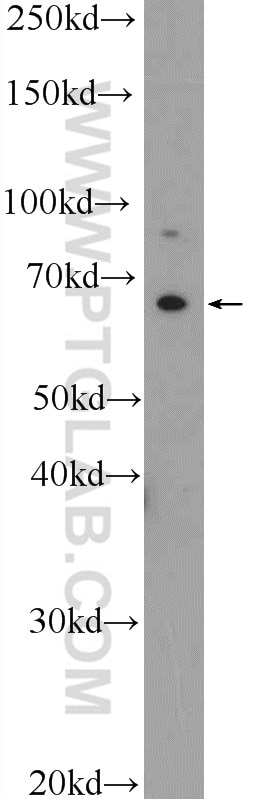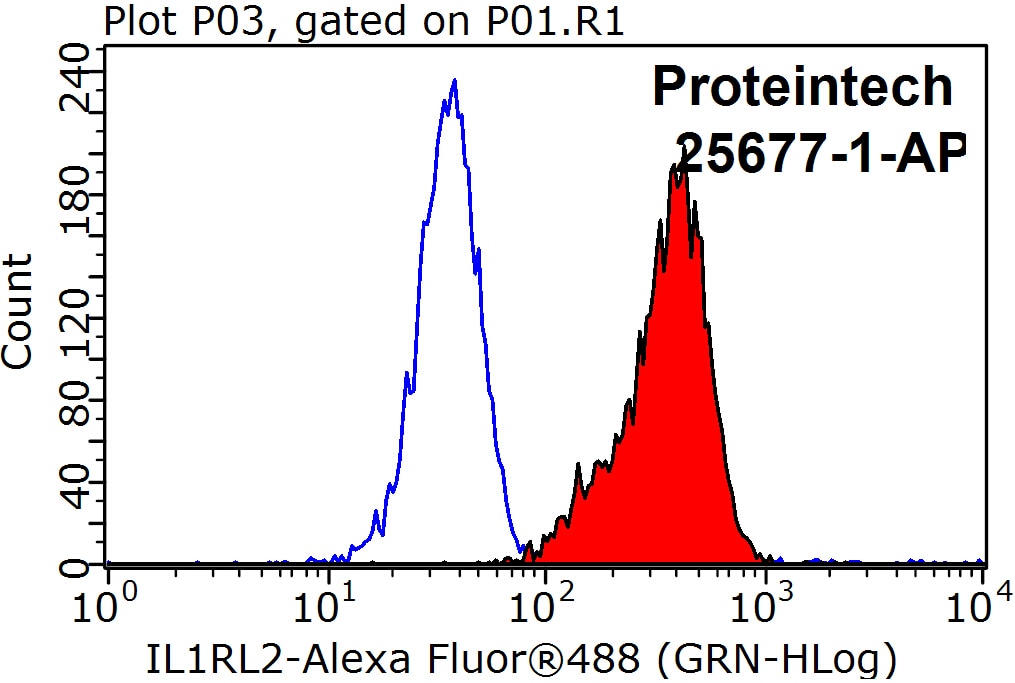Anticorps Polyclonal de lapin anti-IL-1RL2
IL-1RL2 Polyclonal Antibody for FC, WB,ELISA
Hôte / Isotype
Lapin / IgG
Réactivité testée
Humain
Applications
WB, FC, ELISA
Conjugaison
Non conjugué
N° de cat : 25677-1-AP
Synonymes
Galerie de données de validation
Applications testées
| Résultats positifs en WB | cellules K-562 |
| Résultats positifs en cytométrie | cellules K-562 |
Dilution recommandée
| Application | Dilution |
|---|---|
| Western Blot (WB) | WB : 1:200-1:1000 |
| Flow Cytometry (FC) | FC : 0.20 ug per 10^6 cells in a 100 µl suspension |
| It is recommended that this reagent should be titrated in each testing system to obtain optimal results. | |
| Sample-dependent, check data in validation data gallery | |
Applications publiées
| FC | See 1 publications below |
Informations sur le produit
25677-1-AP cible IL-1RL2 dans les applications de WB, FC, ELISA et montre une réactivité avec des échantillons Humain
| Réactivité | Humain |
| Réactivité citée | Humain |
| Hôte / Isotype | Lapin / IgG |
| Clonalité | Polyclonal |
| Type | Anticorps |
| Immunogène | IL-1RL2 Protéine recombinante Ag21974 |
| Nom complet | interleukin 1 receptor-like 2 |
| Masse moléculaire calculée | 575 aa, 65 kDa |
| Poids moléculaire observé | 65 kDa |
| Numéro d’acquisition GenBank | BC107064 |
| Symbole du gène | IL1RL2 |
| Identification du gène (NCBI) | 8808 |
| Conjugaison | Non conjugué |
| Forme | Liquide |
| Méthode de purification | Purification par affinité contre l'antigène |
| Tampon de stockage | PBS avec azoture de sodium à 0,02 % et glycérol à 50 % pH 7,3 |
| Conditions de stockage | Stocker à -20°C. Stable pendant un an après l'expédition. L'aliquotage n'est pas nécessaire pour le stockage à -20oC Les 20ul contiennent 0,1% de BSA. |
Protocole
| Product Specific Protocols | |
|---|---|
| WB protocol for IL-1RL2 antibody 25677-1-AP | Download protocol |
| FC protocol for IL-1RL2 antibody 25677-1-AP | Download protocol |
| Standard Protocols | |
|---|---|
| Click here to view our Standard Protocols |
Publications
| Species | Application | Title |
|---|---|---|
Am J Pathol IL-36γ Augments Ocular Angiogenesis by Promoting the Vascular Endothelial Growth Factor-Vascular Endothelial Growth Factor Receptor Axis |



